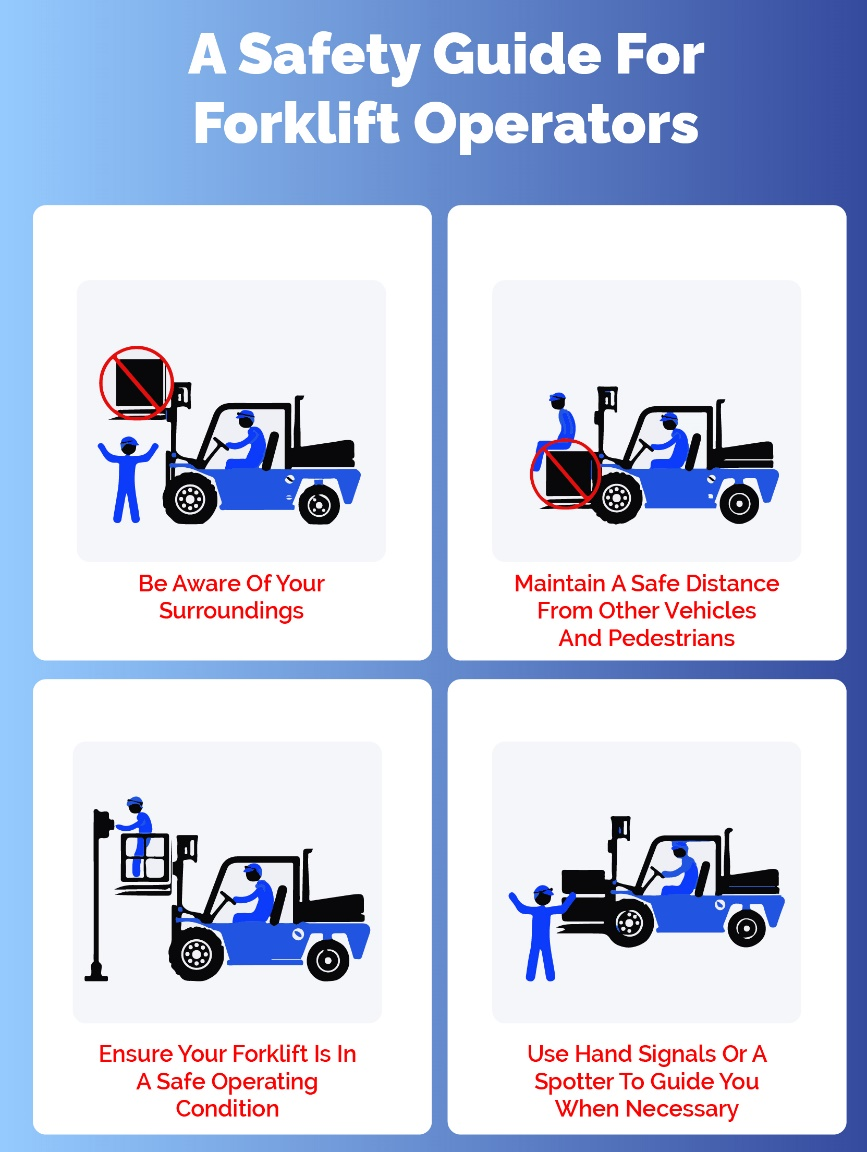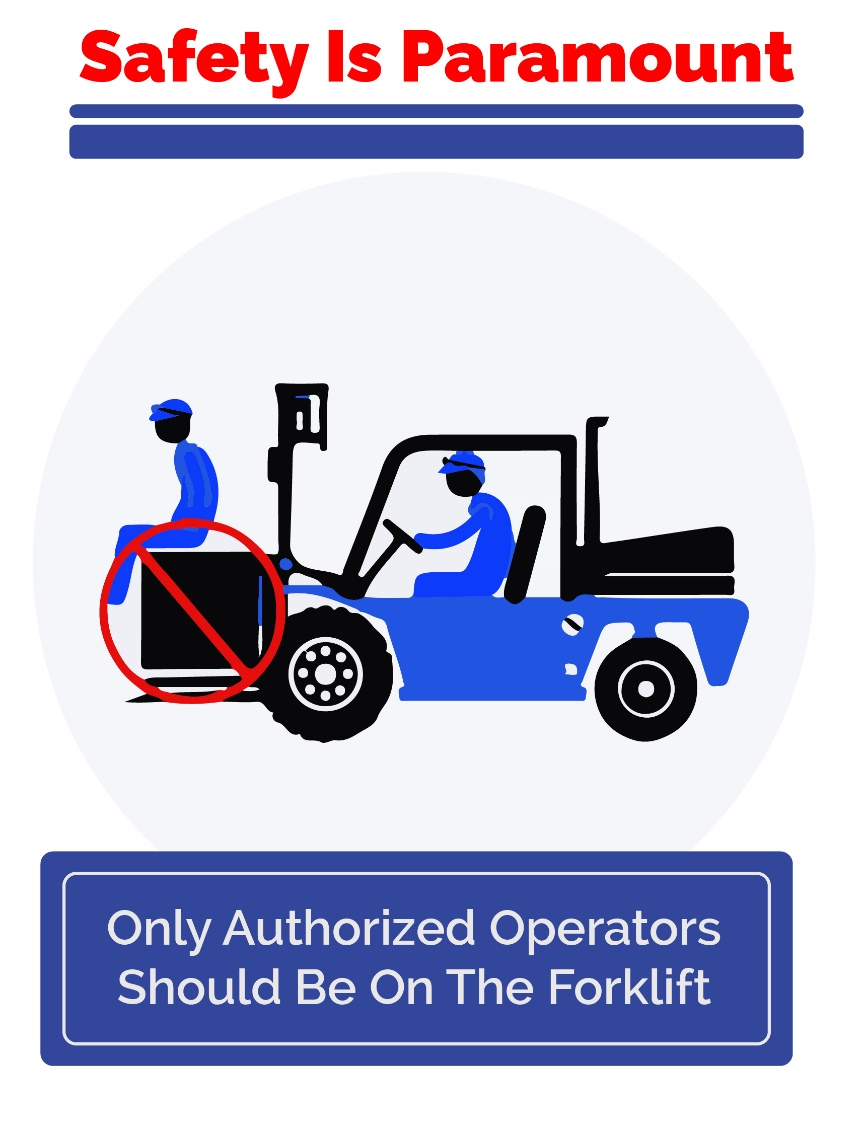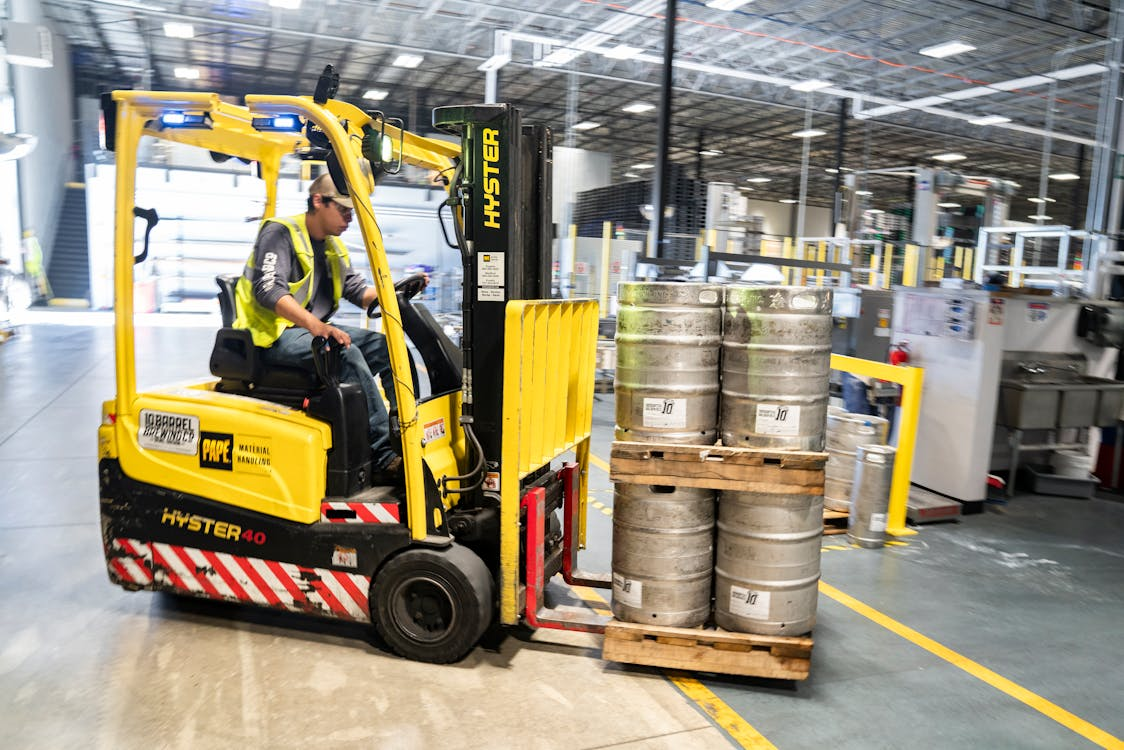Forklifts are indispensable tools in various industries, helping streamline operations and enhance productivity. However, their use comes with inherent risks. Accidents involving forklifts can lead to serious injuries or even fatalities, making safety a critical concern.
One way to mitigate these risks is by having a comprehensive emergency response plan tailored specifically for forklift operators. A well-crafted plan not only addresses the immediate actions needed in case of an emergency but also integrates preventive measures that ensure the safety of workers and minimize the likelihood of accidents.
In this blog, we’ll explore the essential elements that should be included in an emergency response plan to enhance forklift safety. By implementing these components, workplaces can significantly reduce the risks associated with forklift operation and ensure that their workforce is prepared to respond effectively in the event of an emergency.
1. Comprehensive Risk Assessment and Hazard Identification:
The foundation of any effective emergency response plan lies in understanding the specific risks associated with forklift operations within a workplace. Conducting a comprehensive risk assessment is the first step in this process. This assessment should identify potential hazards such as operating forklifts in confined spaces, navigating tight corners, or working in areas with high pedestrian traffic.
Additionally, the assessment should consider the types of materials being handled, the environment in which the forklifts operate, and the experience levels of the operators.
By identifying these risks, employers can develop targeted strategies to mitigate them, such as implementing confined space training for operators who frequently work in restricted areas or ensuring that operators receive adequate fall protection training when working on elevated platforms.
This proactive approach not only enhances forklift safety but also informs the development of emergency procedures that are tailored to the unique challenges of each workplace.
2. Clear and Effective Communication Channels:
Clear and effective communication is crucial in an emergency situation. Forklift operators and other employees must know how to communicate quickly and efficiently to report accidents, request assistance, or alert others to potential dangers.
Establishing designated communication channels, such as two-way radios, intercom systems, or emergency alarm buttons, ensures that help can be summoned immediately.
Moreover, it’s essential that all workers, including forklift operators, are trained on how to use these communication systems. Regular drills should be conducted to test the efficiency of these channels and to ensure that employees are familiar with the protocols for reporting an emergency.
Communication is also vital in coordinating with external emergency services, such as paramedics or fire departments, and ensuring they have accurate information about the situation before arriving on the scene.
3. First Aid Preparedness and Training:
In the event of an accident, the ability to administer first aid promptly can mean the difference between life and death. Ensuring that forklift operators and other employees are trained in first aid is a critical component of any emergency response plan. First aid training courses should be tailored to the specific risks associated with forklift operation, such as treating injuries caused by falls, collisions, or being struck by falling objects.
Workplaces should offer a range of first aid training options, from basic first aid training for all employees to more advanced first aid courses for designated responders. Intermediate first aid courses may be beneficial for employees who are likely to encounter more severe injuries, providing them with the skills needed to manage more complex medical situations until professional help arrives.
In addition to training, workplaces must ensure that first aid kits are readily available and adequately stocked. These kits should be strategically placed in areas where forklift operations are common, and employees should be trained on their contents and proper usage.

Detailed forklift safety instructions are essential for preventing accidents and ensuring operator readiness in emergencies.
4. Emergency Evacuation Procedures:
Emergency evacuation procedures are a crucial element of any emergency response plan. In the event of a fire, chemical spill, or other hazardous situation, forklift operators must know how to safely evacuate the area while minimizing the risk to themselves and others.
These procedures, with the help confined space training, should include clear instructions on how to shut down and secure the forklift, as well as designated evacuation routes that are free of obstructions.
Regular evacuation drills should be conducted to ensure that all employees are familiar with the procedures and can execute them efficiently. These drills should also consider scenarios where forklifts are in operation, simulating how operators should respond in real-time emergencies.
Coordination with local emergency services during these drills can provide valuable feedback on the effectiveness of the evacuation plan and identify areas for improvement.
5. Equipment Maintenance and Safety Checks:
Regular maintenance and safety checks of forklifts are essential to prevent accidents and ensure that the equipment is in proper working condition. A forklift that is poorly maintained or has mechanical issues can become a significant hazard, leading to accidents that could have been avoided with regular inspections.
An emergency response plan should include procedures for conducting routine equipment checks before and after each use.
Operators should be trained to identify potential issues, such as worn-out tires, malfunctioning brakes, or leaks in hydraulic systems. Any issues identified should be reported immediately, and the forklift should be taken out of service until repairs are completed.

Safe driving practices for forklift operators include regular training, clear communication, and adherence to safety protocols.
In addition to daily checks, periodic thorough inspections by qualified technicians should be part of the maintenance schedule. These inspections should align with the manufacturer’s recommendations and industry standards to ensure that the forklifts are safe to operate.
6. Training and Certification for Forklift Operators:
Training and certification are key components of ensuring forklift safety. Operators must be properly trained not only in the operation of the forklifts but also in the emergency procedures specific to their workplace. This training should include theoretical instruction as well as practical, hands-on experience under the supervision of a qualified instructor.
Forklift operators should undergo training in areas such as fall protection training, confined space training, and emergency response protocols. In addition, employers should provide refresher courses and additional training whenever there are changes in the workplace, such as the introduction of new equipment or modifications to the layout of the operating area.
Certification ensures that operators have met the required standards of competence and are capable of operating forklifts safely. Employers should keep records of all training and certifications and ensure that they are up to date.
7. Continuous Improvement and Review of the Emergency Response Plan:
An emergency response plan is not a static document but should be continually reviewed and improved to adapt to changing conditions and new insights. Regularly reviewing the plan allows employers to identify any gaps or weaknesses and implement necessary updates.
This review process should involve input from all stakeholders, including forklift operators, safety personnel, and management. Feedback from emergency drills, accident reports, and near-miss incidents can provide valuable information for improving the plan.
Additionally, staying informed about new regulations, industry standards, and best practices in forklift safety can guide the continuous improvement of the emergency response plan.
By fostering a culture of continuous improvement, workplaces can ensure that their emergency response plan remains effective and relevant, providing a robust framework for protecting forklift operators and other employees.

A forklift carries a large container, showcasing the importance of equipment maintenance and careful operation to prevent accidents.
Safeguarding Forklift Operators with a Comprehensive Plan:
Creating a detailed and well-thought-out emergency response plan is essential for ensuring forklift safety in any workplace. By incorporating comprehensive risk assessments, effective communication channels, first aid preparedness, emergency evacuation procedures, equipment maintenance, operator training, and continuous improvement practices, employers can create a safer working environment.
Metro Safety Training, a leader in workplace safety training in Vancouver and Surrey, offers a range of services that can support the development of an effective emergency response plan. From first aid training courses to forklift operator training and confined space training, our expertise ensures that your workforce is well-prepared to handle emergencies with confidence.Your commitment to safety starts with the right training and preparation, ensuring that every employee goes home safe at the end of the day.
Contact Metro Safety Training to learn more about how our services can help you enhance forklift safety in your workplace.







